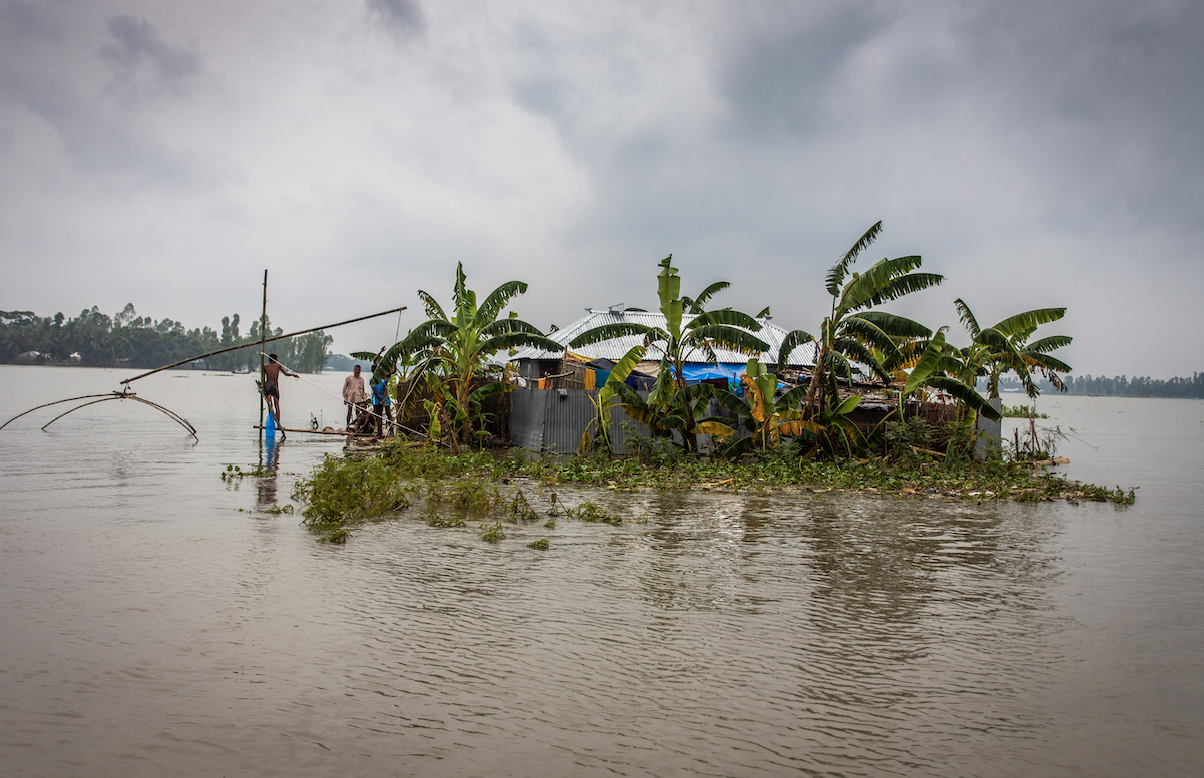Climate and disaster risk management
Agrifood systems are extremely vulnerable to climate and disaster risks. Over the past decades, there has been an observed increase in the frequency and intensity of extreme weather events. These lead to the loss of human life, and destroy or severely damage livelihoods and critical infrastructure. They also cause significant losses in agricultural production, and pose an increasing challenge to agrifood systems. Countries in protracted conflict and crisis situations are particularly vulnerable because of the crucial role that agriculture, natural resources and the rural economy play in supporting people’s livelihoods and the extensive damage and loss to agrifood systems caused by disasters that aggravate food insecurity and malnutrition in all its forms.
How FAO supports

The environmental and social standard on climate change and disaster risk reduction aims to reduce and manage potential risks that may arise from climate change, and other multiple and often simultaneous hazards. The standard seeks to:
- Minimize greenhouse gas emissions associated with FAO programmes and projects, and enhance and maintain carbon sinks.
- Ensure that all FAO programmes and projects integrate climate change and disaster risk considerations.
- Climate-proof FAO programming by promoting climate-resilient measures, climate change mitigation, adaptation and disaster risk reduction, to reduce the exposure and vulnerability of communities and their livelihood systems to the impacts of climate change and disaster risks.
- Strengthen low-carbon and resilient agrifood systems to address both the risks associated with climate change and disasters, their related impacts on people, livelihoods, food security and nutrition.

Investments in agriculture must be informed by robust evidence about both past and future climate variability, seasonality, and extremes to drive sustainable, resilient and inclusive development. Climate change and disaster risks are the cumulative result of (i) potential occurrence and frequency and severity of hazards; (ii) the exposure of the system to the hazard over time; and (iii) the vulnerability and adaptive capacity of the affected population or system. Risk is highest when all three components – hazard, exposure and vulnerability – are categorized as high and adaptive capacity is low.
FAO has developed a unique risk screening tool – the Climate Risk Toolbox (CRTB) – to support the overall design and implementation of more resilient projects and programmes, and as a part of environmental and social risk due diligence processes in particular. The CRTB is an open-access resource hosted on the Hand-in-Hand Geospatial Platform, allowing all interested users to conduct screenings and obtain an automatic report which includes tailored climate-resilient measures.

Early warning systems linked to early action are critical to prevent significant damage and losses. Earth Observation (EO) and remote sensing-based information are crucial in agricultural monitoring. This information plays an important role in enabling early warning of harvest shortfalls, increasing crop production and ensuring agricultural sustainability.
Agricultural drought monitoring
The Agricultural Stress Index System (ASIS) is an award-winning tool providing near real-time global, regional and country level data allowing easy identification of areas of cropped land with a high likelihood of water stress (drought). The tool can be used to trigger early action and implementation of mitigation activities, and the development of national drought plans.
